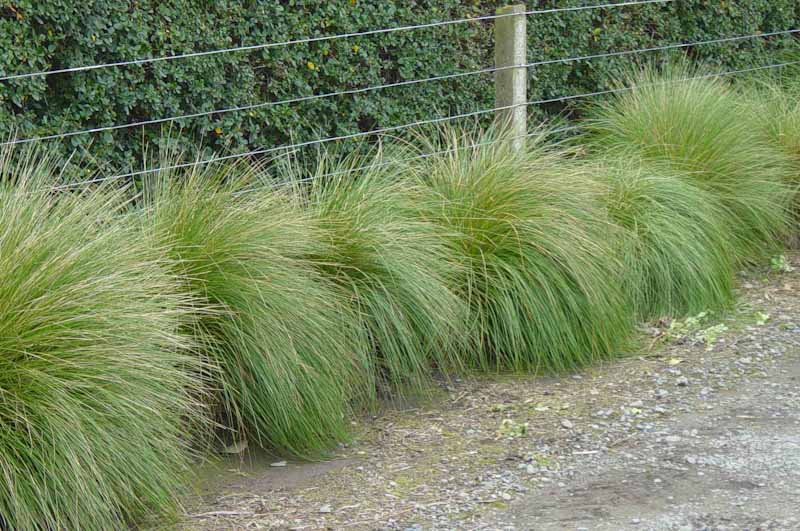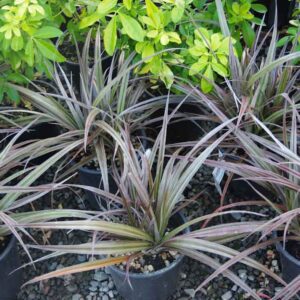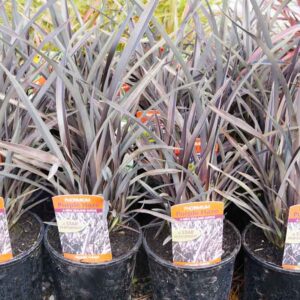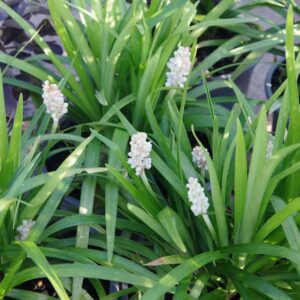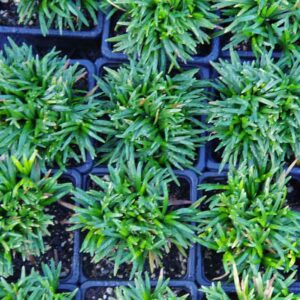Description
Poa cita, commonly known as Silver Tussock Grass or Snow Grass, is an attractive ornamental grass prized for its fine texture, silvery foliage, and graceful arching form. Native to New Zealand, this striking grass species is valued for its year-round interest, drought tolerance, and adaptability to various growing conditions. With its delicate appearance and shimmering foliage, Poa cita adds a touch of elegance and texture to garden landscapes, rockeries, and coastal gardens, enhancing outdoor spaces with its ethereal beauty.
Description:
Plant Size: Poa cita typically grows as a small to medium-sized grass, forming clumps of fine-textured foliage that reach heights of 70 cm and spread 1 meter wide. It is well-suited for use as a ground cover or accent plant in garden landscapes.
Foliage: The foliage of Poa cita is the standout feature of the plant, with slender, arching leaves that are silver-gray in colour and have a soft, feathery texture. The foliage forms dense mounds or tussocks, creating a graceful and airy effect in the garden.
Flowers: In late spring to early summer, Poa cita produces delicate flower spikes held above the foliage. The flowers are typically pale green to white in colour and add additional visual interest to the plant.
Growing and Caring:
Preferred Climate: Poa cita thrives in temperate climates with mild, moist conditions. It is tolerant of a wide range of temperatures and soil types, making it suitable for growing in various regions.
Sunlight: Poa cita prefers full sun to partial shade, although it can tolerate some degree of shade. In hot climates, afternoon shade may be beneficial to protect the foliage from scorching.
Soil Requirements: Well-drained, fertile soil is ideal for Poa cita, with a slightly acidic to neutral pH. It can tolerate various soil types, including loam, clay, and sandy soil, but prefers soil that retains moisture without becoming waterlogged.
Watering: Regular watering is essential to maintain soil moisture for Poa cita, particularly during periods of drought or hot weather. Water deeply and infrequently, allowing the soil to dry out slightly between waterings.
Pruning: Poa cita generally does not require pruning, except to remove dead or damaged foliage or to tidy up the appearance of the plant. Avoid cutting into the main stems, as this can damage the plant and inhibit growth.
Fertilisation: Poa cita generally does not require regular Fertilisation, as it is a low-maintenance plant. However, applying a balanced fertilizer in spring can help promote healthy growth and vibrant foliage.
Mulching: Applying a layer of organic mulch around the base of the plant helps retain soil moisture, regulate temperature, and suppress weed growth, contributing to the overall health and vigor of Poa cita.
Pest and Diseases: Poa cita is relatively resistant to pests and diseases, but occasional issues such as leaf spot or rust may occur, particularly in humid conditions. Regular inspection and appropriate pest management practices can help prevent problems.
Attractive Features of Poa cita for Gardens:
Silver Foliage: The silver-gray foliage of Poa cita adds a touch of elegance and texture to garden landscapes, creating a soft, ethereal effect and providing year-round interest.
Fine Texture: The fine-textured leaves of Poa cita form dense mounds or tussocks, adding depth and dimension to garden beds and borders and creating a graceful and airy atmosphere.
Adaptability: Poa cita is adaptable to various growing conditions and is well-suited for use in rockeries, coastal gardens, and other challenging environments, where it thrives with minimal care.
Low Maintenance: Once established, Poa cita is relatively low-maintenance, requiring only regular watering and minimal pruning to maintain its health and appearance, making it an excellent choice for both novice and experienced gardeners.
Wildlife Attraction: The delicate flower spikes of Poa cita attract pollinators such as bees and butterflies, adding biodiversity to the garden and supporting local ecosystems.
